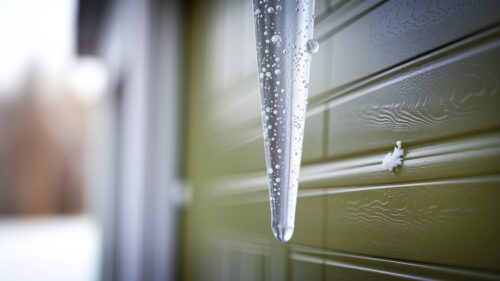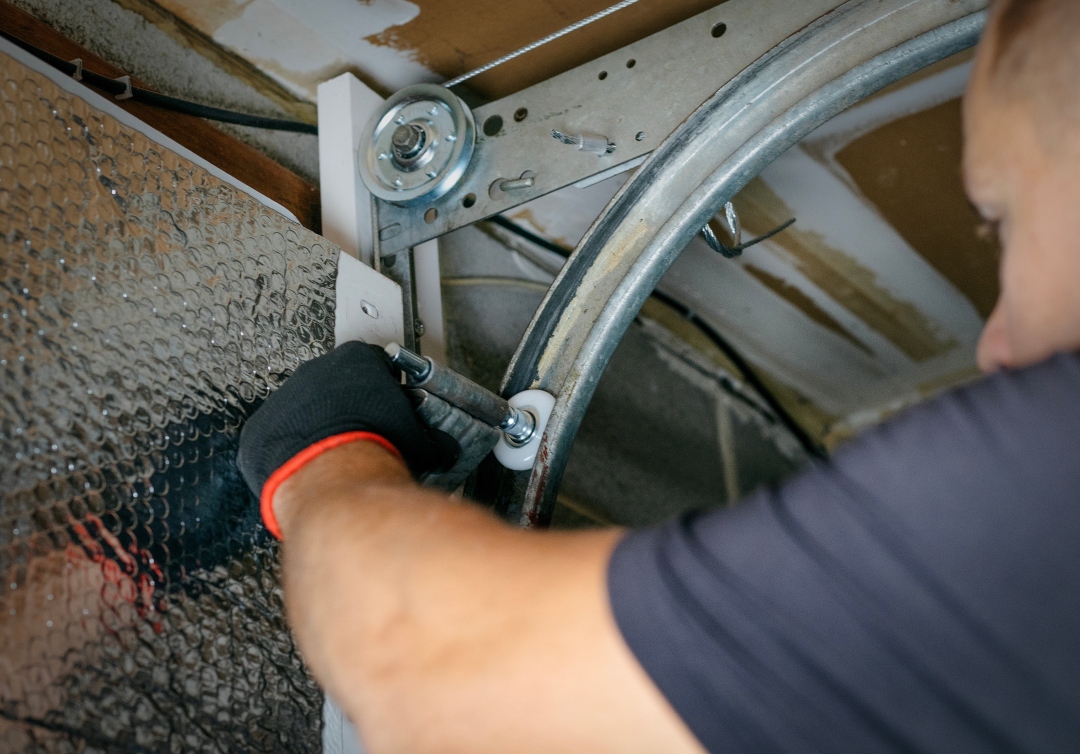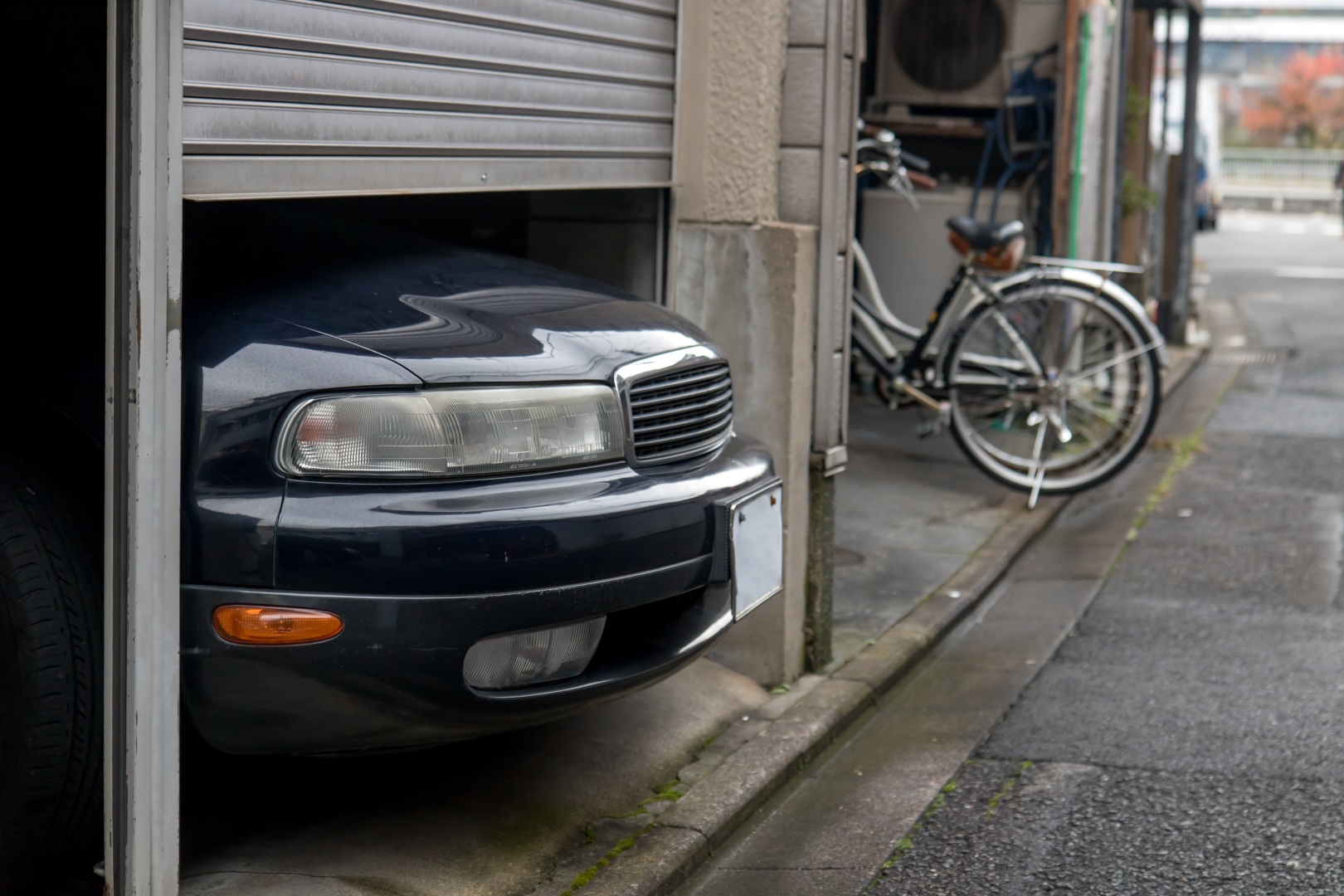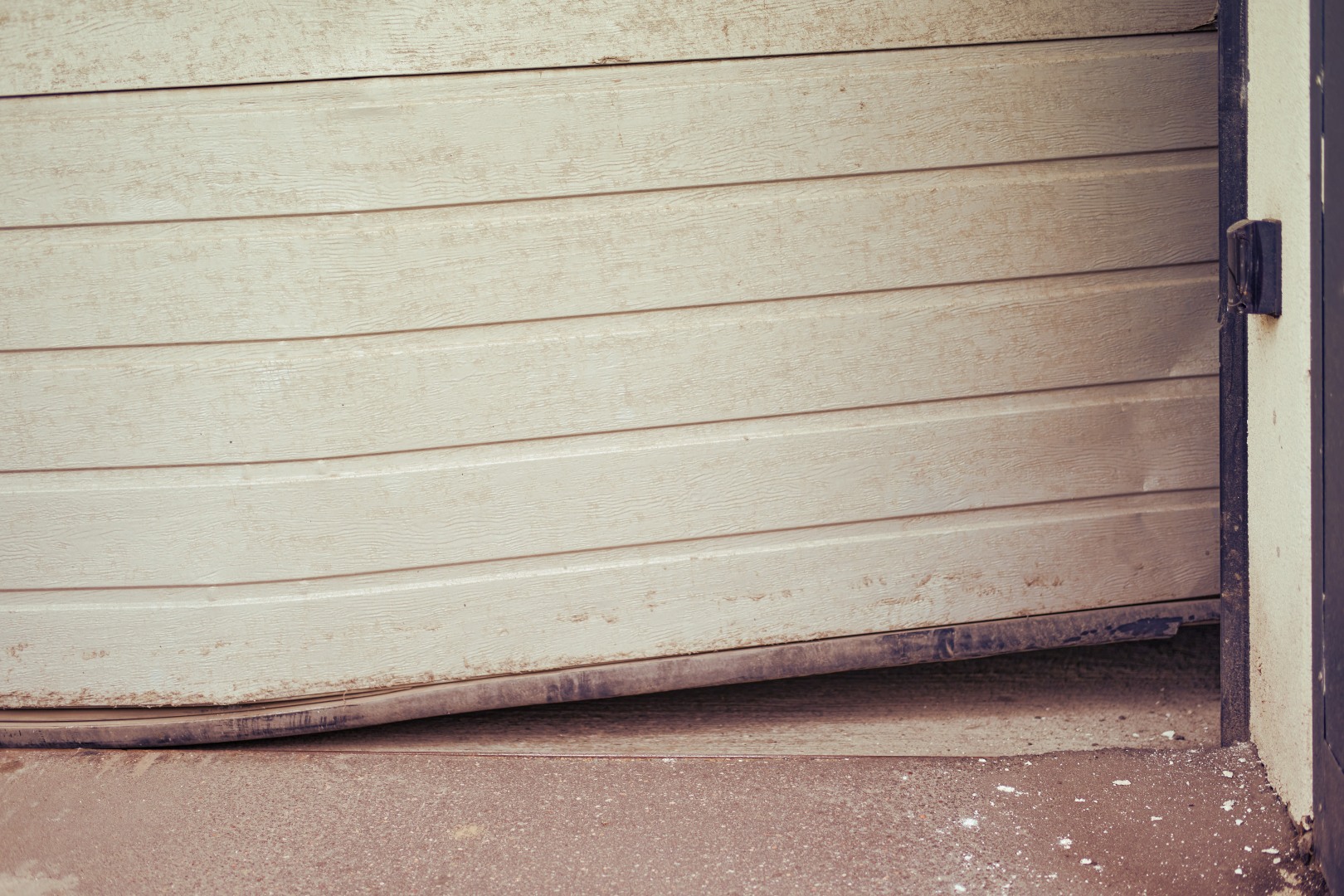There’s nothing quite like waking up on a freezing winter morning, heading out for work and discovering your garage door is frozen shut. Unfortunately, without winter garage door maintenance, this is a common headache for many homeowners as temperatures drop. Between ice buildup, worn-out seals, and brittle metal components, winter can be brutal on garage doors.
But the good news? A little preparation goes a long way. Just like you winterize your car or your sprinkler system, your garage door needs seasonal attention to stay safe, functional, and problem-free. In this guide, we’ll walk you through exactly how to prevent freeze-ups, ice damage, and other cold-weather failures so you can avoid costly repairs and keep your garage door running smoothly all season long.
Common Winter Garage Door Problems
When temperatures drop, your garage door becomes more vulnerable to issues that might not show up during warmer months. Cold weather affects both the mechanics and the materials involved which leads to annoying (and sometimes dangerous) problems. Even with winter garage door maintenance, here are some of the most common winter-related garage door issues to watch out for:
Garage Door Frozen Shut
One of the most frustrating winter problems is when your garage door literally freezes to the ground. Melting snow or rainwater can pool at the base of the door and refreeze overnight, forming a thin layer of ice that bonds the door to the threshold.
Trying to force the door open while it’s frozen can damage the weather seal, strain the opener, or even crack the bottom panel.
Quick tip: Keep a snow shovel or broom handy to clear away slush and avoid pouring hot water on the area. It often refreezes quickly and can warp metal.
Stiff or Sluggish Movement
Cold air causes lubricants to thicken and metal parts to contract. This can make your garage door feel jerky, slow to respond, or unusually loud during operation.
If it’s straining to open or closes with a loud bang, something could be off with the balance or lubrication. Left unchecked, this can shorten the lifespan of your opener and springs.
Broken Garage Door Springs and Cables
Garage door springs are under a lot of tension, and cold temperatures can cause the metal to become brittle over time. A weak or worn spring is more likely to snap when it’s freezing out — especially if the door has to work harder due to ice or misalignment.
Cables can also fray or stiffen in the cold, leading to uneven movement or complete failure.
Warning: Never attempt to repair or replace springs yourself. These components can cause serious injury without the right tools and training. If you need this level of garage door repair, it’s best to call a professional.
Opener Malfunctions
Cold weather can cause garage door openers to act up. Batteries in wall units and remotes drain faster in low temperatures, and circuit boards inside the opener can become sluggish.
You might notice delayed responses, failure to fully open/close, or intermittent operation especially during early morning hours when it’s coldest.
Sensor Issues and Misalignment
Moisture, snow, or condensation can fog up or block your garage door’s safety sensors. If the infrared beams are disrupted, the door may refuse to close or reopen halfway through its cycle.
Cold weather also shifts your home’s structure slightly, which may cause tracks or sensors to misalign.
Winter Garage Door Maintenance
Keep this winter garage door maintenance checklist as your go‑to prep for a trouble‑free season. You can do the easy tasks yourself (most take under an hour), but leave anything involving springs, cables, or complex opener repairs to a pro.
- Clear snow and ice around the threshold
- Shovel or sweep slush away after snow events so water can’t pool and freeze under the door.
- If you use a de‑icer, choose a product labeled non‑corrosive and apply sparingly; rinse off residue when temperatures rise.
- Inspect and replace weatherstripping and the bottom seal
- Check the rubber bottom seal and side weatherstrips for cracks, gaps, or loss of elasticity.
- Replace if compressed, brittle, or torn. This prevents water intrusion and the formation of ice at the base.
- Lubricate moving parts for cold weather
- Use a silicone‑based or low‑temperature garage door lubricant (do not use heavy grease on tracks).
- Apply to rollers, hinges, pivot points, and the torsion bar bearings (if accessible). Wipe away excess to avoid attracting grit.
- Test door balance and ease of movement
- With the opener disconnected (follow your opener’s manual), lift the door partway and let go. It should stay put. If it drifts up or down, the balance may be off.
- Don’t attempt spring adjustments yourself. If the door is unbalanced, call a professional.
- Inspect springs, cables, and rollers visually
- Look for obvious rust, fraying cables, or broken rollers. Any significant wear or visible damage means call a technician.
- Listen for unusual noises during operation (grinding, loud pops); those are early warning signs.
- Check and clean tracks
- Remove debris from tracks with a brush or vacuum; do not pack lubricant into the track. Just wipe the inside clean.
- If the track looks bent or out of alignment, stop using the door and schedule service.
- Verify sensor alignment and keep them clear
- Clean sensor lenses with a soft cloth and ensure the indicator lights show proper alignment.
- Remove snow or ice buildup in front of sensors; blocked sensors will prevent the door from closing.
- Replace or charge opener batteries and test backup power
- Cold drains batteries faster. Replace remote and keypad batteries before the coldest months.
- If your opener has a battery backup, test it so you’re not left without power during storms.
- Improve insulation and weather defense
- Check your door’s insulation (look for foam backing or panel specs). If your garage is attached, higher insulation helps protect interior pipes and reduces heat loss into the house.
- Consider adding insulation panels or upgrading to an insulated door if you notice major temperature transfer.
Keep Your Garage Door Running Smoothly All Year Long
Cold weather doesn’t have to spell trouble for your garage door. With a bit of winter garage door maintenance and a few smart precautions, you can prevent freeze-ups, reduce wear and tear, and avoid those frustrating winter morning surprises.
Whether it’s inspecting your weatherstripping, lubricating moving parts, or checking your garage door opener batteries, taking action now will save you money — and stress — later. If you notice anything unusual like loud noises, uneven movement, or visible damage, don’t wait until it breaks.
If you’d like preventative maintenance taken off your plate and save money on any repairs needed, Garage Door Guy has a membership program that comes with professional service and tune-ups on all doors on a single residential structure. It also gives you discounts on service, parts, and materials. Serving Springfield, MO, and surrounding areas, we’re here to make sure your garage door performs at its best no matter how low the temperature drops.
Call us today at 417-413-3813 for any questions or to schedule service!



